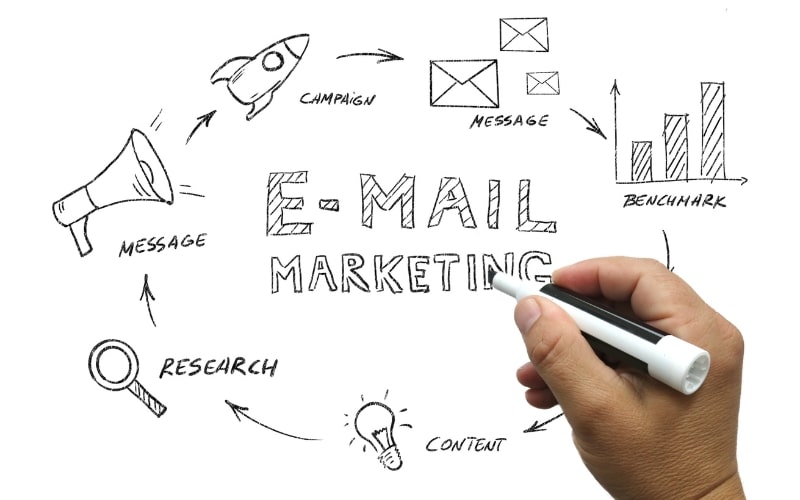Email marketing has evolved tremendously over the years. No longer is it sufficient to send out generic, one-size-fits-all messages. To stand out in a crowded inbox, marketers must use advanced techniques that personalize and engage recipients. One such powerful tool is dynamic content. In this article, we will explore the power of dynamic content in emails, how it can be leveraged to improve engagement, conversion rates, and the overall effectiveness of email marketing campaigns.
What is Dynamic Content?

Dynamic content refers to email content that changes based on the recipient’s data, behavior, and preferences. This type of content is tailored to each individual recipient, making the email more relevant and personalized. Dynamic content can include personalized text, images, product recommendations, and even entire sections of an email that are customized for each recipient.
The Importance of Personalization
Personalization is no longer just a nice-to-have in email marketing; it is a necessity. Studies have shown that personalized emails improve click-through rates, conversion rates, and customer loyalty. Dynamic content allows for a high level of personalization, ensuring that each recipient receives a message that is relevant to them. This relevance leads to better engagement and a higher likelihood of the recipient taking the desired action.
Types of Dynamic Content
There are several types of dynamic content that can be used in emails:
- Personalized Greetings: Using the recipient’s name in the email greeting.
- Dynamic Images: Changing images based on the recipient’s preferences or past behavior.
- Product Recommendations: Suggesting products based on the recipient’s past purchases or browsing history.
- Location-Based Content: Tailoring content based on the recipient’s location.
- Behavioral Content: Adjusting content based on the recipient’s interactions with previous emails or the website.
Benefits of Using Dynamic Content
The use of dynamic content in emails offers numerous benefits:
- Increased Engagement: Personalized and relevant content captures the recipient’s attention, leading to higher engagement rates.
- Improved Conversion Rates: When recipients receive content that is tailored to their interests and needs, they are more likely to convert.
- Enhanced Customer Experience: Dynamic content provides a more personalized experience, making the recipient feel valued and understood.
- Better Segmentation: Dynamic content allows for more precise segmentation, enabling marketers to target specific groups with relevant messages.
- Higher ROI: With increased engagement and conversion rates, dynamic content can lead to a higher return on investment for email marketing campaigns.
How to Implement Dynamic Content in Emails
Implementing dynamic content in emails involves several steps:
- Collect Data: Gather data on your recipients, including their preferences, behavior, and demographics. This can be done through sign-up forms, surveys, and tracking interactions with your emails and website.
- Segment Your Audience: Use the collected data to segment your audience into different groups based on their characteristics and behavior.
- Create Dynamic Content: Develop content that can be personalized for each segment. This may involve creating different versions of text, images, and product recommendations.
- Use Email Marketing Tools: Utilize email marketing tools that support dynamic content. These tools can automate the process of personalizing and sending emails to each segment.
- Test and Optimize: Continuously test and optimize your dynamic content to ensure it is effective. Use A/B testing to compare different versions of your emails and make data-driven decisions.
Examples of Dynamic Content in Action

To better understand the power of dynamic content, let’s look at some examples of how it can be used in email marketing campaigns:
- Welcome Emails: A dynamic welcome email can include personalized greetings, tailored content based on the recipient’s preferences, and product recommendations that align with their interests.
- Abandoned Cart Emails: Dynamic content can be used to remind recipients of the items they left in their cart, with personalized product recommendations to encourage them to complete their purchase.
- Re-Engagement Emails: For inactive subscribers, dynamic content can offer personalized incentives or recommendations to re-engage them with your brand.
- Birthday Emails: Celebrate a recipient’s birthday with a personalized email that includes a special offer or discount, along with content tailored to their interests.
Best Practices for Using Dynamic Content
To maximize the effectiveness of dynamic content in your email marketing campaigns, follow these best practices:
- Keep it Relevant: Ensure that the dynamic content is relevant to the recipient’s interests and needs. Irrelevant content can lead to disengagement and unsubscribes.
- Balance Personalization and Privacy: While personalization is important, respect your recipients’ privacy. Avoid using overly intrusive data that may make recipients uncomfortable.
- Test Regularly: Continuously test different versions of your dynamic content to see what resonates best with your audience. Use the insights to refine and improve your emails.
- Monitor Performance: Track the performance of your dynamic content to see how it impacts engagement and conversion rates. Use this data to make informed decisions about future campaigns.
- Use High-Quality Images: If using dynamic images, ensure they are of high quality and relevant to the recipient. Low-quality images can negatively impact the recipient’s perception of your brand.
Challenges of Using Dynamic Content
While dynamic content offers many benefits, it also comes with challenges:
- Data Management: Collecting and managing the data needed for dynamic content can be complex and time-consuming. It requires robust data management systems and processes.
- Content Creation: Creating multiple versions of content for different segments can be resource-intensive. It requires careful planning and coordination.
- Technical Integration: Implementing dynamic content often requires integrating various tools and platforms, which can be technically challenging.
- Maintaining Relevance: Ensuring that dynamic content remains relevant to each recipient requires ongoing analysis and optimization. This can be demanding and requires a proactive approach.
Future Trends in Dynamic Content
As email marketing continues to evolve, so too will the use of dynamic content. Here are some future trends to watch for:
- AI and Machine Learning: The use of AI and machine learning will enable more sophisticated and accurate personalization. These technologies can analyze vast amounts of data to create highly tailored content.
- Real-Time Personalization: Dynamic content will increasingly be personalized in real-time, based on the recipient’s current behavior and context.
- Interactive Content: Interactive elements, such as quizzes and surveys, will become more common in dynamic emails, providing a more engaging experience for recipients.
- Cross-Channel Integration: Dynamic content will be integrated across multiple channels, creating a seamless and consistent experience for recipients, regardless of how they interact with your brand.
Harnessing Personalized Experiences for Maximum Engagement
Dynamic content is the secret sauce that can significantly enhance your email marketing strategy. By tailoring emails to individual preferences and behaviors, you create a personalized experience that resonates with each recipient. This targeted approach increases the likelihood of engagement, as recipients are more likely to find the content relevant and valuable. Imagine receiving an email that speaks directly to your interests and needs—it feels less like marketing and more like a helpful recommendation. Such personalization not only fosters a stronger connection with your audience but also drives them to take action. Thus, improving traffic and sales for your website. Read more on the other reasons why your website isn’t getting traffic. By leveraging dynamic content, you ensure that your emails stand out in a crowded inbox, ultimately boosting your open rates, click-through rates, and overall conversion rates
Conclusion
Dynamic content is a powerful tool in email marketing that can significantly enhance the relevance and personalization of your emails. By leveraging dynamic content, you can improve engagement, conversion rates, and the overall effectiveness of your email marketing campaigns. However, it is important to approach dynamic content thoughtfully, considering the challenges and best practices to maximize its potential. As technology continues to advance, the opportunities for dynamic content in email marketing will only grow, offering even more ways to create personalized and impactful communications with your audience.


